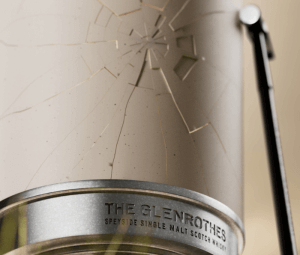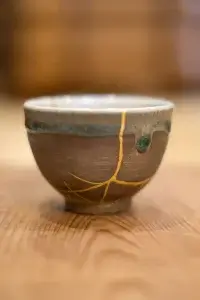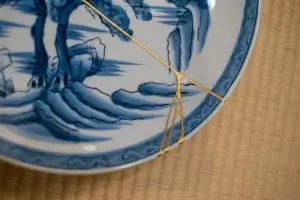Breaking point
ANY MENTION OF Japanese craft gets my antennae tingling. The idea that a whisky was embracing the art of kintsugi was particularly intriguing. That it was one of my long-term loves, Glenrothes, piqued my interest even more, though the headline ‘Glenrothes unveils “smashable” 51 year old’ did rather shock. Were they encouraging drinking it in shots?
It transpires – as I’m sure you know by now – the bottle is encased in a pillar made from Jesmonite and the only way to get to the whisky is to take a ‘custom-made’ hammer and break the container, (“A luxury piñata”, ©Arthur Motley).

You then send the shards off where they will be repaired kintsugi style then returned to you as a vase.
Dating from the 15th century, kintsugi, is the Japanese craft of mending broken pottery, the cracks highlighted with the use of resin and a powder of precious metal.
Like all Japanese aesthetics, it has its roots in the tea ceremony (and therefore Zen) as a technique for mending humble household objects – tea bowls, saucers etc. Kintsugi, therefore, is about recycling and preserving. Deeper down it is about embracing impermanence; accepting that things will decay and decline. It isn’t about destruction. No custom-made hammers are required.
The gold/filler was used to highlight this, to show that at some point this will happen to us all. As change is inevitable we should embrace imperfection – the tarnish on silver, the lines on a face. Like Leonard Cohen sang, it’s ‘the crack in everything’ that lets the light in, this lack of perfection, the acceptance of flaws.
Kintsugi is about about knowing that nothing lasts, which is the opposite of a £37,000 bottle, which will never be touched.

The only break which actually matters in this case – and which demonstrates impermanence – is in the opening and drinking of the bottle. Doing so however will kill its value. For all the protestations of producers and auction houses that ‘this is for sharing’, it really isn’t. It’s for looking at. The whisky is simply part of a work of art which, by inference, can only ever be worth anything if it is permanent. Ironic huh?
The thing is, I’m not particularly worried about the price. There’s only 100 bottles, so of course it’s going to be expensive. It should be. I congratulate the Edrington and Glenrothes teams over five decades for making and caring for it. If someone wants to part with £37,000 I’m not going to stop them.
I get it that a one-off whisky should be celebrated – a new bottle, a different pack, a coherent story, all of which have the liquid as the focal point. What concerns me in this case – which applies to all of today’s increasingly lavishly packaged high-end whiskies – is the fact that whisky has lain for over half a century doesn’t seem to be sufficient as a selling point.
Somehow, the whisky’s quality, rarity and scarcity and its genuine story is not sufficient to convince people to buy. That will only happen by adding extravagant packaging (and the accruing of significant extra costs) and the creation of a new and often contrived narrative.
That, in turn, suggests a nervousness in the minds of the producer that the whisky isn’t enough. Might they have lost faith? Does the whisky actually not matter?

Another way of looking at this emerged recently during a panel discussion on rare whisky, in which Ian McWilliam from Glenfarclas told a story about when John Grant came to the office where the prototype for a blingy pack of an extra-aged release was awaiting his sign-off.
‘Last night,’ he told the team, ‘I had a bottle of Lafite. I looked at the label and the pack and realised that it was the same as any other claret. The same bottle shape, the same drawing of chateau and name. The reputation of the wine lay solely in its quality and reputation. We’ll do the same.’
A similar approach is taken by Springbank and independent bottlers. Think back to Diageo’s Rare Malts, or its early Special Releases. Whisky forward. Makes you think, eh?